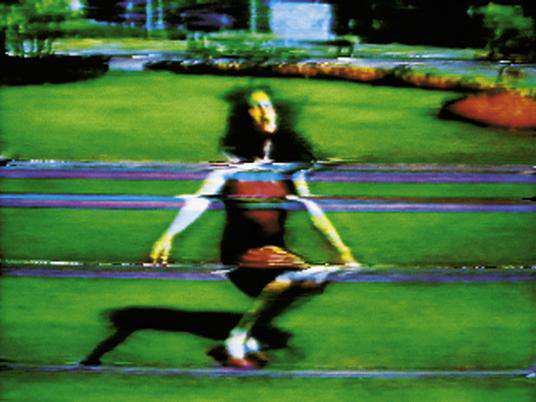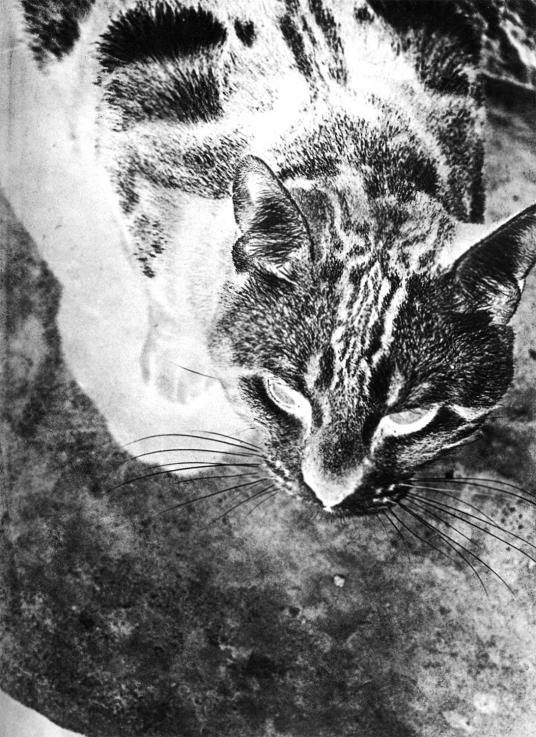As a Ph.D. student in Harvard’s Department of Visual and Environmental Studies, Olivia Crough is interested in the role museums play in higher education. Thus her graduate internship in the Harvard Art Museums’ Division of Modern and Contemporary Art over the 2015–16 academic year was a perfect fit: during her time here at the museums, she assisted with the exhibition Folding, Refraction, Touch: Modern and Contemporary Art in Dialogue with Wolfgang Tillmans (August 27, 2016–January 8, 2017) and related programming.
“It’s been exciting for me to see how the Harvard Art Museums work as part of the educational experience on campus,” said Crough, who was advised by Lynette Roth, the Daimler Curator of the Busch-Reisinger Museum and acting head of the Division of Modern and Contemporary Art. Contributing to the exhibition “was an incredible opportunity to learn about the curatorial process.”
Crough began her internship closely studying the work of Wolfgang Tillmans and the artist’s 2013 installation Folding, Refraction, Touch—Installation for the Busch-Reisinger Museum. Delving deeply into the museums’ collections through Art Study Center appointments, she identified and studied objects that would offer interesting perspectives on Tillmans’s work, for potential inclusion in the exhibition. Later, she narrowed down the selection with Roth, and drafted wall labels to accompany the objects.
Lights (Body): Rhythm on Camera
Crough also thoroughly researched options for this fall’s film and video series Lights (Body): Rhythm on Camera. A screening she attended last year of some of Tillmans’s films at The Kitchen in New York City gave her a better sense of how the artist’s films might connect to the exhibition, as well as to films by other modern and contemporary artists. The three-part series she designed highlights different themes in Tillmans’s work, such as the relationships between sound and image, abstraction, movement, color, sex, and the body.
The first night’s program featured works on video spanning Tillmans’s career (1987–2015), with a number of videos that relate directly to his Harvard installation. The 10-minute Kopierer (Copier) (2010), for instance, shares its name and subject with two prints in the installation. Lights (Body) (2002), a video of lights and shadows reflected off moving bodies in a club, inspired the title of the film series.
Other artists are in the spotlight for the remaining programs, including Maya Deren, Yvonne Rainer, Hans Richter, and Oskar Fischinger. The second installment (September 29) explores concepts of rhythm, light, and movement—themes inherent in Tillmans’s art. The final program (October 27) focuses on the history of visual music, through 16mm films produced between 1921 and 1980.
Additional Programming
Besides organizing the film series and gallery talks about the exhibition, Crough planned the Art Study Center Seminar “Folding, Refraction, Touch—Photographic Process and Materiality” (December 2). The event will examine additional works that resonate with Tillmans’s installation, such as those by Lotte Jacobi, László Moholy-Nagy, Gerhard Richter, and Matt Saunders.
“The seminar will give us a sense of how artists experimented with photograms,” Crough said. “These show Tillmans’s interest in the photographic process, the way that light functions within that process, and abstraction.”
As with all projects Crough has completed for her internship, she said, “it was a great opportunity to identify works that would open up aspects of the Tillmans installation, while also speaking to the strengths of the modern and contemporary collection.”





